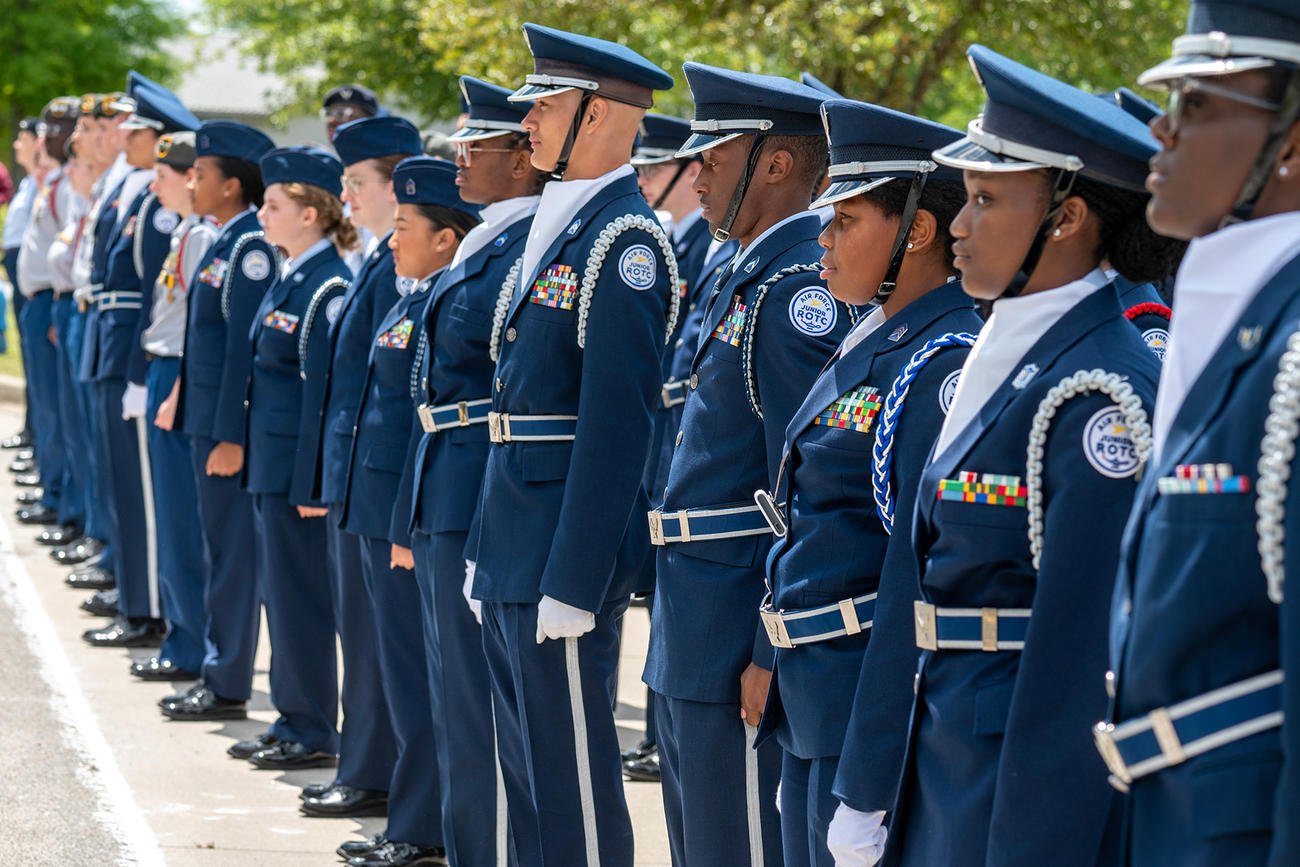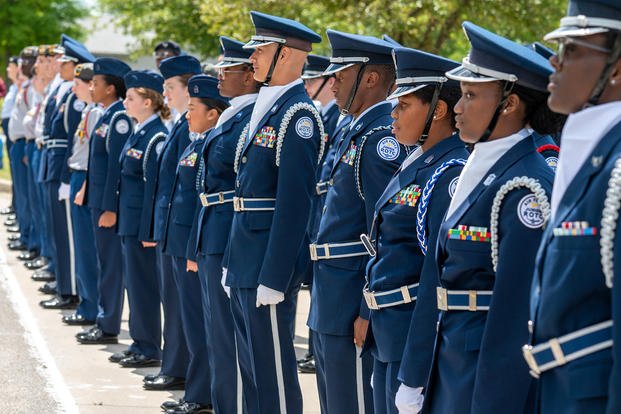

High school students whose campuses do not have a Junior Reserve Officers’ Training Corps program would be able to join units at another school under a bill being introduced in Congress.
The expansion of the JROTC program is part of a broader bill being introduced by Sen. Joni Ernst, R-Iowa, intended to build on recent momentum in recruiting by expanding the military’s access to high schools.
“For me, choosing to serve our country opened the door for the American dream, allowed me to afford college, and paved the way for a life committed to service,” Ernst, who served in the Iowa National Guard, said in a statement. “By increasing avenues to the benefits and pathways of a career in the military, we can unlock even more opportunities and brighter futures for our next generation.”
Read Next: Marines Using Work-Arounds to Fund Duty Station Moves, Bonuses amid Congress’ Stopgap Funding
The bill, dubbed the Service Enlistment and Recruitment of Valuable Engagement, or SERVE, Act, would specifically direct the Pentagon to create a policy that allows high schools to have “cross-town” affiliations with schools that host JROTC units so students can “enroll in the JROTC program of the host unit and participate in activities at both campuses without dedicated staff,” according to bill text obtained exclusively by Military.com.
In effect, the bill would make JROTC more akin to the college-level Reserve Officers’ Training Corps, which easily allows students from one university to commission through an ROTC of another school. Still, in practice, it’s unclear how much this would open up JROTC since high school students could face hurdles, such as not being able to drive and having more rigid schedules than college students.
A House version of the bill is also being introduced by Reps. Jen Kiggans, R-Va.; Chrissy Houlahan, D-Pa.; and Lance Gooden, R-Texas.
In addition to the JROTC expansion, the bill would require schools that get federal funding to provide “meaningful access” to military recruiters; create a pilot program to honor schools with high military enlistment rates; give students from schools with high enlistment rates priority admissions into the service academies; and create a “National Week of Military Recruitment” celebration.
Recruiting officials have raised complaints in recent years that the military has been struggling to rebuild relationships with schools in some situations after the COVID-19 pandemic. High schools are typically fruitful places for military recruiters to pitch service to young Americans who may not have thought about joining the ranks.
The JROTC expansion could potentially aid the military as it seeks to turn around a recent slump in recruiting, which has already shown signs of a turnaround. While officials with the services are adamant that JROTC — a program that has existed since World War I — is not a recruiting platform, it is among the most publicly visible aspects of the military. Roughly one quarter of teens in those programs end up enlisting or commissioning.
The Army, the largest service and also the largest component of the JROTC program, has been growing its program steadily each year since the beginning of the wars in Iraq and Afghanistan. There are roughly 1,700 Army JROTC programs in high schools with roughly 275,000 cadets.
The service has plans to continually expand the program through the rest of the decade, with dozens of schools on the waitlist to become part of it.
School districts see it as a prestigious program that offers discipline for its students. For the services, it’s a relatively cheap avenue to have their footprint all over the country. It costs the Army about $800 per cadet, with much of the cost being shared with the schools.
Lawmakers, too, have taken an interest in expanding JROTC in recent years as a solution to military recruiting woes.
“This committee is serious about building Junior ROTC,” Senate Armed Services Committee Chairman Roger Wicker, R-Miss., said in a hearing in January. “Junior ROTC is a citizenship builder.”
The annual defense policy bill Congress passed in December incorporated several provisions with that goal, including ones that increased the minimum number of nationally authorized JROTC units to expand the program to more schools, and that decreased the minimum number of participating students required to establish a JROTC unit so smaller schools can participate in the program.
But there have also been concerns about misconduct within the JROTC program after a 2022 New York Times investigation that found at least 33 JROTC instructors had been criminally charged with sexual crimes in the preceding five years.
The Pentagon later revealed, in a letter to senators in 2023, that military officials received 114 allegations of instructors committing violence, sexual abuse or sexual harassment against JROTC cadets over the previous 10 years.
Since those revelations, lawmakers have also taken steps through the annual defense policy bill to try to reform the program. In particular, the 2023 bill required the Pentagon and military services to sign standardized agreements with every school with a JROTC program that set rules, including how quickly schools must notify the military about misconduct allegations.
The Pentagon told Congress that it has implemented the reforms in a letter last year that also disclosed that 21 instructors in the JROTC program were accused of sexual misconduct against high school cadets in the 2022-23 school year.
Related: Military Focusing on JROTC Programs as Chances to Paint Picture of Service to Gen Z Dwindle
